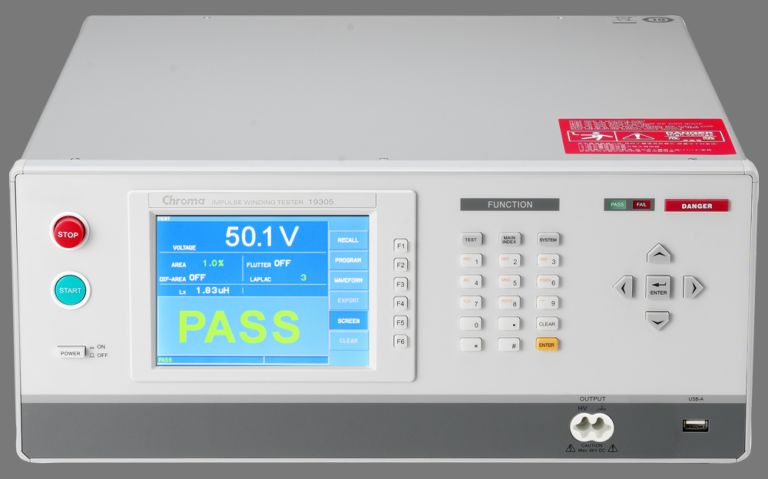What Is The Standard For A High Pot Test?
A high pot test, also known as a high potential or dielectric withstand test, is an electrical test performed on electrical equipment to verify the integrity of insulation against breakdown under high voltage stress. High pot testing is an essential part of safety testing and ensuring proper operation of equipment intended for higher voltage operation.
The purpose of a high pot test is to detect any weak spots, defects, or impurities in insulation, wiring, or winding coils that could lead to failure when high voltages are present. High voltage can penetrate materials and cause arcing or flashovers that damage equipment and pose risks of electric shock and fire. Performing high pot tests helps to ensure safety and reliability by identifying problems before equipment is put into operation. High pot testing provides assurance that insulation and spacings can withstand overvoltages that may occur due to lightning strikes, switching surges, or other system disturbances.
Purpose of High Pot Testing
High Pot Testing, also known as dielectric withstand voltage testing or insulation resistance testing, is an important procedure conducted to ensure the safety and reliability of electrical equipment and components. The main purposes of High Pot Testing are:
Test insulation strength – The test applies a high voltage that is significantly higher than the operating voltage in order to verify the integrity of insulation materials and detect potential weaknesses or flaws. This ensures the insulation can withstand voltage surges and prevent failure during operation.
Ensure safety – By testing insulation resistance, High Pot Testing helps prevent electrical shocks, short circuits, and fire hazards. It confirms that current will not leak through the insulation and pose a safety risk.
Prevent failure – The test detects weak spots and faults in insulation that could lead to catastrophic failure when electrical devices are operational. By identifying these issues beforehand, High Pot Testing allows mitigating actions to be taken.
Overall, High Pot Testing provides quality assurance and safety confirmation before electrical equipment is put into service. It ensures reliability and prevents premature breakdown or operational incidents.
When is High Pot Testing Performed?
High pot testing is performed at several stages during the manufacturing and assembly process of electrical equipment and devices. Some of the common times when high pot testing is conducted include:
On finished products: High pot testing is commonly performed on finished products before they shipped out to customers. This final dielectric withstand test helps ensure the product’s insulation can withstand expected voltage surges and transients during operation. High pot testing on finished products reveals any weaknesses or flaws that may have developed during assembly.
During production: Many manufacturers perform high pot tests during the production process, after major sub-assemblies are completed. This helps verify insulation integrity and catch issues early before additional value is added. For example, high pot testing may be conducted on motor windings before they are installed in a motor housing.
Before shipping: High pot testing is often conducted as part of final quality control checks before products leave the manufacturing facility. Passing a high voltage dielectric withstand test provides a final verification of insulation quality and helps ensure the product will function safely at the customer site.
Overall, high pot testing at different production stages helps confirm the product’s insulating materials and construction can withstand short-term overvoltage conditions without breakdown or damage.
Voltage Levels
The voltage levels used in high pot testing depend on the type of equipment being tested and the applicable standards. Some common test voltages include 1,500V, 2,000V, 5,000V, and 10,000V. For example, per IEC 60950 standards for information technology equipment, the test voltage is 1,500V + two times the working voltage. The pass/fail criteria depend on the amount of leakage current measured during the test. The leakage current must stay below a specified limit, often around 1-5mA, for the equipment to pass.

Higher test voltages are used for medium and high voltage equipment. IEEE standards recommend test voltages of 2x, 2.5x or 3x the working voltage plus 1,000V. For instance, 15kV cable may be tested at 36kV. The general rule is the higher the working voltage, the higher the test voltage needs to be to properly stress the insulation.
Test Duration
The duration of a high pot test can vary depending on the standard being followed, but is typically 1-5 minutes long. According to the electrical engineering portal, “The test time for most standards, including products covered under IEC 60950, is 1 minute.” (Source) This 1 minute test duration is common for many electronics and electrical devices.
For larger equipment like transformers and motors, the test duration may be longer. Coilcraft states, “Test voltage duration is usually 60 seconds, however UL and other safety standards typically allow a duration of one or two seconds for the purpose of production testing.” (Source) So while 1-2 minutes is typical, 5 minutes or longer may be required for very large equipment or to comply with certain standards.
The key factors are applying the test voltage for a sufficient duration to reveal any weaknesses or faults according to the applicable industry standards. The test duration should strike a balance between being long enough for confidence, but short enough for practical testing purposes.
Test Frequency
The frequency of high pot testing depends on the type of electrical equipment and its operating conditions. Safety-critical equipment, such as medical devices and aviation controls, require more frequent high pot testing than general commercial or industrial equipment.
For most electrical devices and components, high pot testing should be performed at least once per year or every 2-3 years. More frequent testing may be needed for equipment exposed to contamination, moisture, vibration, temperature swings or other stresses during operation. Portable equipment and devices that get moved around frequently should be hipot tested every 6-12 months.
Newly manufactured or repaired equipment requires initial high pot testing before being put into service. After repairs or servicing, hipot testing should be repeated to ensure no damage was done during disassembly or reassembly.
During preventative maintenance of operating electrical systems, spot checking with hipot testing can identify potential insulation weaknesses before failures occur. Programmed maintenance schedules may call for hipot testing of random samples on a monthly or quarterly basis.
References:
https://en.wikipedia.org/wiki/Dielectric_withstand_test
Equipment
The most important piece of equipment for high pot testing is the test instrument itself, known as a hipot tester or dielectric withstand tester. These testers generate the high voltages needed for hipot testing and measure leakage current to determine if a product passes or fails the test. Hipot testers are available in benchtop and portable models from manufacturers like Chroma, Associated Research, and QuadTech.
Other important test equipment includes high voltage cables to connect the hipot tester to the device under test (DUT), as well as test fixtures or jigs to securely hold the DUT. These fixtures ensure proper contact and spacing during the test. Custom fixtures may be required for testing unique products. Proper connectors, usually high voltage coaxial, are also needed to interface the tester with the DUT.
For operator safety, equipment like a high voltage insulating mat, safety glasses, properly rated test leads, and hipot tester guards should be used.
Sources:
https://www.chromausa.com/instruments/hipot-testers/
https://www.hipot.com/products/electrical-safety-testers/hipot-testers.html
Safety
High pot testing involves using high voltages, so safety precautions are extremely important. According to Safety guidelines for hipot testing , the following precautions should be taken:
– Disconnect power before connecting or disconnecting test leads.
– Ensure proper grounding techniques are used.
– Only touch insulated parts of probes and leads. Never touch exposed metal.
– Use proper PPE like insulated rubber gloves and safety glasses.
– Keep an insulated rubber mat on the floor of the test area.
– Make sure the Hipot is interlocked to prevent unintentional output.
– Use safety enclosures like a cage or acrylic box for the device under test.
– Clearly label the Hipot test area to keep untrained people away.
– Post warning signs indicating high voltage testing is in progress.
Proper Hipot testing procedures should always be followed. According to Safety guidelines for hipot testing, procedures include:
– Start with a low voltage and slowly increase to the desired test voltage.
– Ensure the device under test is properly isolated from ground.
– Discharge the device fully before handling after the test.
– Have an easily accessible shut-off switch for emergencies.
– Develop and follow a safety checklist for each test being performed.
Adhering to precautions and procedures helps prevent electrical shock and creates a safe test environment.
Test Methods
There are several standard high voltage test methods used for high pot testing:
AC Withstand Voltage Test – An AC high voltage, typically 50/60 Hz, is applied between two electrodes of the equipment under test. The voltage is raised gradually to the specified test level and held for a specified time, usually 1 minute. This tests the insulation’s ability to withstand AC voltages (Electrical Engineering Portal, 2011).
DC Withstand Voltage Test – A DC high voltage is applied between two electrodes and gradually increased to the specified level. It is held for a specified time, usually 1 minute. This tests the insulation’s ability to withstand DC voltages (In Compliance Magazine, 2022).
Dielectric Withstand Test – A high DC voltage is applied to stress the insulation and verify it does not break down. The test duration is usually 1-5 seconds (Electrical Engineering Portal, 2011).
Insulation Resistance Test – A DC voltage, typically 500-5000V, is applied to measure the insulation resistance between two electrodes. A high resistance indicates good insulation (In Compliance Magazine, 2022).
Applications
High-pot testing is critical for ensuring safety and performance in many applications and industries. Some key uses include:
Medical Devices – High-pot testing is commonly performed on medical devices to verify insulation and prevent current leakage, which could harm patients. Examples include defibrillators, pacemakers, infusion pumps, and imaging equipment like MRI machines (Matsusada).
Electronics – Consumer electronics, circuit boards, switches, and more undergo high-pot testing during manufacturing. This confirms the isolation between components and verifies they can withstand expected voltage surges (Seaward).
Cables and Wiring – High-voltage cables, power cords, and wire harnesses are often tested to detect flaws in insulation that could lead to shorts or shock hazards.
Transformers – To ensure insulation strength and prevent arcing or dielectric breakdown, high-pot testing is used on transformers, motors, generators, and other electric power equipment.


